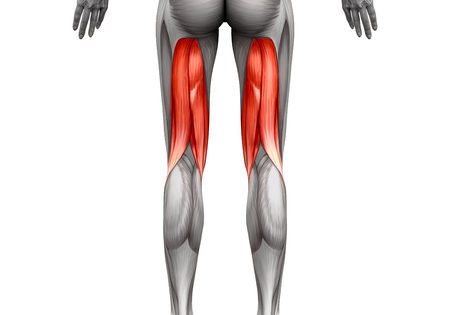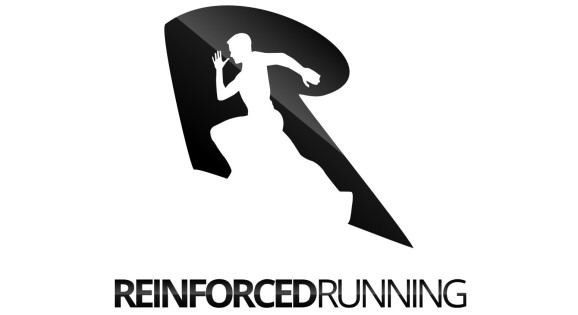I want to tell you a story about my friend Derek.
Derek just started competing in OCR. We met up for coffee to chat about life and the good old college days. When Derek brought up his new obsession – OCR – I couldn’t resist diving in.
Within minutes, he was telling me about his frustrations. I listened intently.
“I run way too much to be this freakin slow!”
“I just don’t like it and I’ve never been much of a runner.”
“I just feel like I can be more prepared for a race if I use my weight vest and practice obstacles.”
Can you relate to Derek?
There are a million fun aspects of OCR training and running is not always one of them. It can be hard to run when you could be swinging from monkey bars or throwing a spear.
However, there is no denying that running is a critical piece to OCR training. It could be the piece that leads to the most significant improvements on race day.
Even if you do not consider yourself to be a “real runner” you can make strides and feel confident on the course if you follow these four training guidelines.
Four Ways to Improve your OCR Running
Play with Your Pace and Learn to Run Fast.
To understand how you feel during the run you need to pay attention to your body and pace. Learning to run intuitively will help you know when to push or hold back.This means knowing what signals your body is sending and what they indicate.
Leave the log and the weight vest behind, unless your workout calls explicitly for slow running or a carry.
There are a time and a place to grind out a workout or make it harder by adding weight. But, running with extra Lbs will slow you down while elevating your heart rate.
As your heart rate increases, you send your body the signal that you will going faster.
Running with a vest will make you run much slower than the output you are putting are creating.
Therefore, you will teach your body how to run slow.
Running is challenging. You do not need to add elements to make it more difficult.
To practice running faster you need to have a purpose for each run.
Example Plan: Running 3x per week:
Run 1
Easy 40 min run @ conversational pace
6-8 15 second striders @ 90% of sprint pace
Run 2
15 min warm up
2 x 12 mins @ half marathon pace
15 min cooldown
Run 3
70 minute long run
50 mins @ conversational pace
20 mins @ marathon pace
Vary your pace from run to run and learn how your body feels during the different stimulus. Change your speeds and become dialed in prior to race day to achieve the best results.
Activate More Muscle to Dominate Hills and Avoid Cramps
When you hit the hills of the race and your active muscle fibers begin to fatigue, you may start to experience cramps or “dead legs”. The good news here is that you are not accessing all of the possible muscle fibers.
Of course, training in the mountains or on hills is the most effective way to access more muscle fiber and train for endurance. Many OCR athletes don’t have access to mountains for everyday training, however, you can simulate the muscle activation in the gym or at home. Combine the compound movements and endurance exercises shown below can help you train for race day.
*The heavier you lift, the more muscle you will activate. Keep this in mind when you are doing work in the gym.
Muscle Endurance Activation Workout Example:
40 minutes
 5-8 Heavy Back Squats
5-8 Heavy Back Squats
7-minute normal pace run
Or
50 minutes
8-10 Dumbbell Steps
5 min row
These workouts are simple and will help you create more endurance as a runner on the hills. If you do not have hills around, then do this routine every 7-10 days.
Click here to get a free16-week OCR training program
Run with Purpose to Continually Improve
You need to do speed work to get faster. There is no way around it. However, you need to be strategic and smart about speed work.
Everyone has a different fitness level. Determine your fitness through a time trial or baseline test. Then discover the key paces that you will set for yourself for the workouts.
Once you know the pace, you can put together a smart plan that will progress fitness to new levels.
Step One: Run a baseline test
Find a local 5k or hit a track where you can get a three-mile stretch uninterrupted.
Then, Run as hard as you can! But really, but run hard for the first mile, maintain your pace through the second, then go all out in the third.
The baseline test should feel hard!
Step Two: Determine your training pace.
Use runsmart calculator to plug in your 3 mile or 5k time trial.
The calculator will provide pace for easy and runs.
Set up your running schedule for three to five runs a week.
Step Three: Check your progress.
Do another baseline test and determine your progress. Change your run pace accordingly.
Baseline Test and Program example:
Baseline 5k = 22 minutes
Pace Equivalents
Easy Pace 9:00-9:35
Threshold Pace 7:33
Fast Rep Pace 6:32
Day 1
Easy 40 mins @ 9:00 pace
Day 2
15 min warm up @ 9:00 pace
3 x 7 mins @ 7:33 pace
– 1 min recovery
15 min cool down @ 9:00 pace
Day 3
Easy 80 minutes @ 9:00 pace
Then
Six 15 second striders @ 6:32 pace
Grab a free “cheat sheet” to learn more about how to train and run faster.
Run Fast on Tough Terrain
A Spartan race outside of a stadium will have nasty footing. Opening your stride during a race is almost impossible. You need to practice on race-specific terrain to increase gains.
Don’t be afraid to add some speed to your trail running sessions.
Make one run a week a moderate tempo run or “up-pace.” Learn how to hug the turns and to balance your stride landing. Running on trails is a skill that needs to be developed. Work at different speeds to prepare for race day.
If trails are hard to come by then, do your best to find a moderate to steep grassy downhill. Do fast repeats down the hill focusing on your body control. Slowing jog back to the top and repeat 8-10 times.
Use these principles and start to run smarter and faster today.
For more OCR training tips read the full article to learn about the “OCR Training Pyramid.”
If you want to get a continued dose of running and OCR click here to subscribe to my mailing list!



